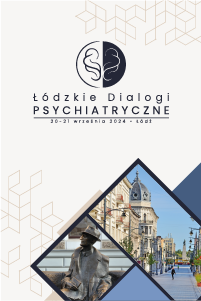Phenomenology and epidemiology of verbal auditory hallucinations and theories explaining their formation
Radosław Tomalski, Igor J. Pietkiewicz
 Affiliacja i adres do korespondencji
Affiliacja i adres do korespondencjiAuditory hallucinations can be manifested in a variety of ways, as a single voice or multiple voices that comment, communicate instructions, offend or comfort. They can do it in the first person (“I’m hopeless. Everyone hates me”), the second person (“Run away from here,” “Kill yourself ”) or the third person (“She is good for nothing. She should jump off the bridge”). Hallucinations vary widely in content, form and dynamics. Some researchers believe that the experience of voices in people from various clinical groups is very similar (or even identical) and is transdiagnostic. Others draw attention to significant differences regarding the characteristics of voices. Verbal auditory hallucinations are commonly associated with schizophrenia. However, different studies show that this symptom was also reported by individuals with other disorders, and by healthy people as well. This led to developing a notion of a continuum, which suggests that the experience of hearing voices has similar qualities, no matter in which context it occurs. In this paper, we present psychological theories and neurobiological mechanisms offering explanations for verbal auditory hallucinations. We also elaborate on phenomenological aspects of voice hearing in patients from different diagnostic groups, and highlight their unique features. Finally, we stress the need for further, in-depth qualitative investigation of verbal auditory hallucinations in these groups, which could help clinicians choose more appropriate treatment solutions.






















